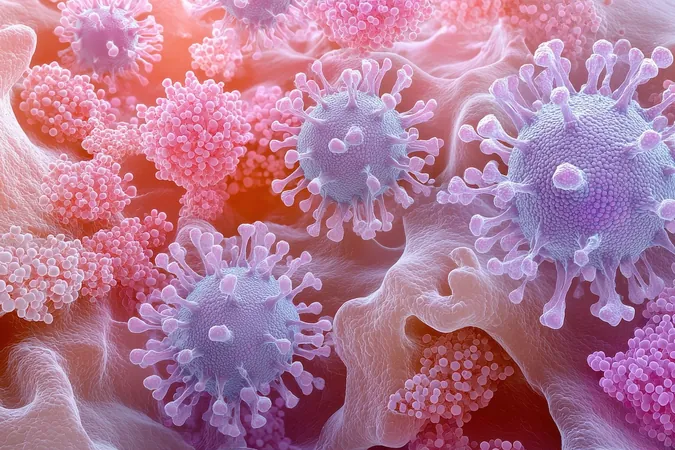
The Alarming Reality of Allergic Contact Dermatitis: A Threat to Quality of Life
2025-04-02
Author: Sarah
Allergic contact dermatitis (ACD) is a pervasive skin condition that can substantially diminish the quality of life for those affected. A recent study published in the Journal of the American Academy of Dermatology Reviews underscores the severe public health implications of ACD and stresses the vital importance of accurate allergen testing in both preventing recurrence and enhancing patient well-being.
Understanding ACD
ACD is characterized by an itchy and often painful rash resulting from direct contact with allergens such as cosmetics, fragrances, metals, and even certain plants. Though it isn't contagious, the discomfort it causes can last for several weeks, severely impacting personal and professional life.
Prevalence of ACD
Current estimates indicate that the prevalence of ACD may reach as high as 20% of the general population, with 5-10% of individuals suffering from symptoms at least once a year. A striking study of nearly 2,700 patients in the United States found that over 63% exhibited at least one positive reaction to allergens, illustrating the widespread nature of this condition.
Mechanism and Diagnosis
The hypersensitive reaction of ACD occurs in two phases: sensitization, where the immune system identifies an allergen, and elicitation, where a subsequent exposure causes the symptoms. Proper diagnosis is crucial and typically involves a detailed medical history and patch testing, which allows healthcare providers to pinpoint specific allergens causing the reaction.
Advancements in Technology
Recent advancements in technology are paving the way for improved diagnosis and management of ACD. Researchers are tapping into artificial intelligence and deep learning algorithms to refine diagnostic procedures, making it easier for healthcare providers to identify allergens with precision.
Management of ACD
Managing ACD effectively hinges on ongoing avoidance of known allergens. While topical corticosteroids can provide relief by reducing itching, more serious cases may require systemic medications. There’s also a growing emphasis on personal protective equipment, particularly for those in high-risk occupations or environments.
Challenges Ahead
Furthermore, the evolving landscape of allergens presents new challenges for diagnosis and treatment. As more allergens emerge, understanding their impacts on individuals is paramount. The study highlights the need for continued research to grapple with these complexities, providing hope for innovative treatment solutions in the future.
Conclusion
In conclusion, while patch testing remains the gold standard for diagnosing ACD, new methods and treatments are on the horizon. With proper education and management strategies, there is potential to drastically improve the quality of life for individuals living with allergic contact dermatitis. Those affected must stay informed and proactive in seeking the newest advancements in care.
Stay Informed
Keep abreast of cutting-edge treatments and insights in dermatology by signing up for our free newsletter, ensuring you're never left behind in the fast-evolving landscape of healthcare.


 Brasil (PT)
Brasil (PT)
 Canada (EN)
Canada (EN)
 Chile (ES)
Chile (ES)
 Česko (CS)
Česko (CS)
 대한민국 (KO)
대한민국 (KO)
 España (ES)
España (ES)
 France (FR)
France (FR)
 Hong Kong (EN)
Hong Kong (EN)
 Italia (IT)
Italia (IT)
 日本 (JA)
日本 (JA)
 Magyarország (HU)
Magyarország (HU)
 Norge (NO)
Norge (NO)
 Polska (PL)
Polska (PL)
 Schweiz (DE)
Schweiz (DE)
 Singapore (EN)
Singapore (EN)
 Sverige (SV)
Sverige (SV)
 Suomi (FI)
Suomi (FI)
 Türkiye (TR)
Türkiye (TR)
 الإمارات العربية المتحدة (AR)
الإمارات العربية المتحدة (AR)